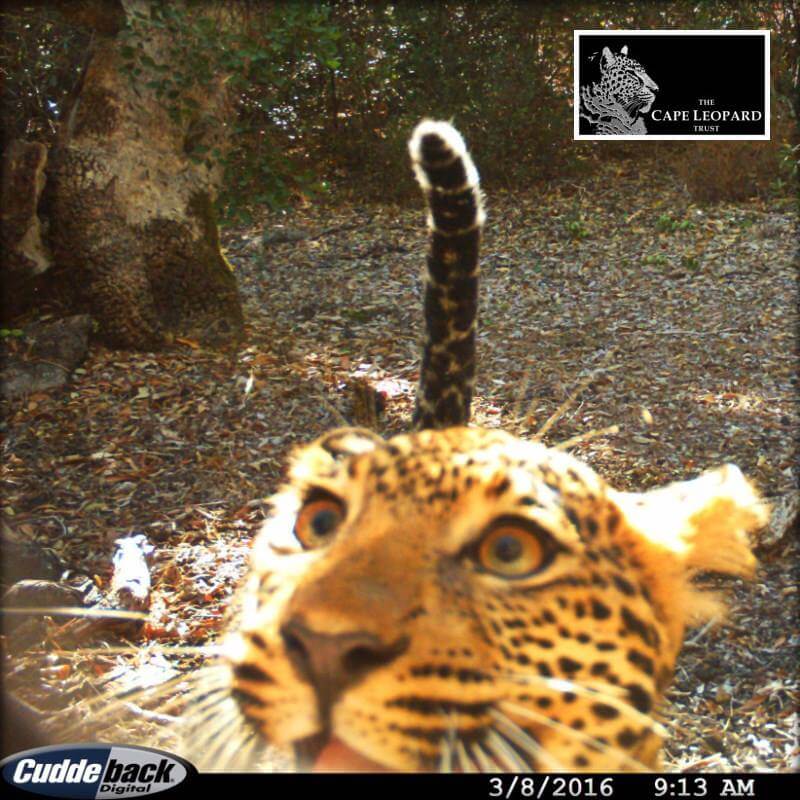Camera traps have become quite common-place. Many avid nature enthusiasts own one or more units and excitedly plan the next location to put their camera and then eagerly await their next photo of a little-seen animal. Also called trail cameras, it was originally designed as scouting cameras for the hunting industry. But, their value was soon realised by naturalists and since the early 1990’s camera traps have revolutionised wildlife research and conservation.
Camera traps allow researchers to collect photographic data of illusive, nocturnal species in remote areas in a noninvasive and comparatively affordable manner. Currently there are a myriad of different camera makes and models on the market each with their own specialised features and applications.
Our work at The Cape Leoapard Trust would be near impossible were it not for the advent of these research tools – ideal for the small leopards here in the Cape’s Fynbos mountains with their extra illusive and shy nature. With carefully planned surveys, we are able to perform population surveys, calculate prey density, estimate home-range and much more... But, today we’d like to share a few of our light-hearted images…
Every once in a while we are treated to a real gem from our remote-sensing cameras. Usually animals (and people) are completely oblivious to the presence of the cameras and ignore them entirely, but on rare occasions an inquisitive animal (person) will approach the camera head on, resulting in a brilliant shot like the one below!

For more info about camera trap methodology please visit: http://capeleopard.org.za/research/techniques/camera-traps
If you would like to sponsor a camera toward our research project, please contact us: [email protected]
Enjoy a selection of our other ‘curious’ photos in the gallery below.
Sincerely,
Anita Wilkinson & Jeannie Hayward
Boland Project

















